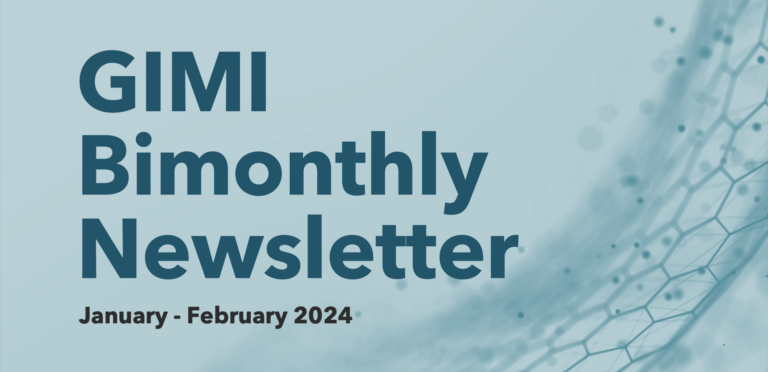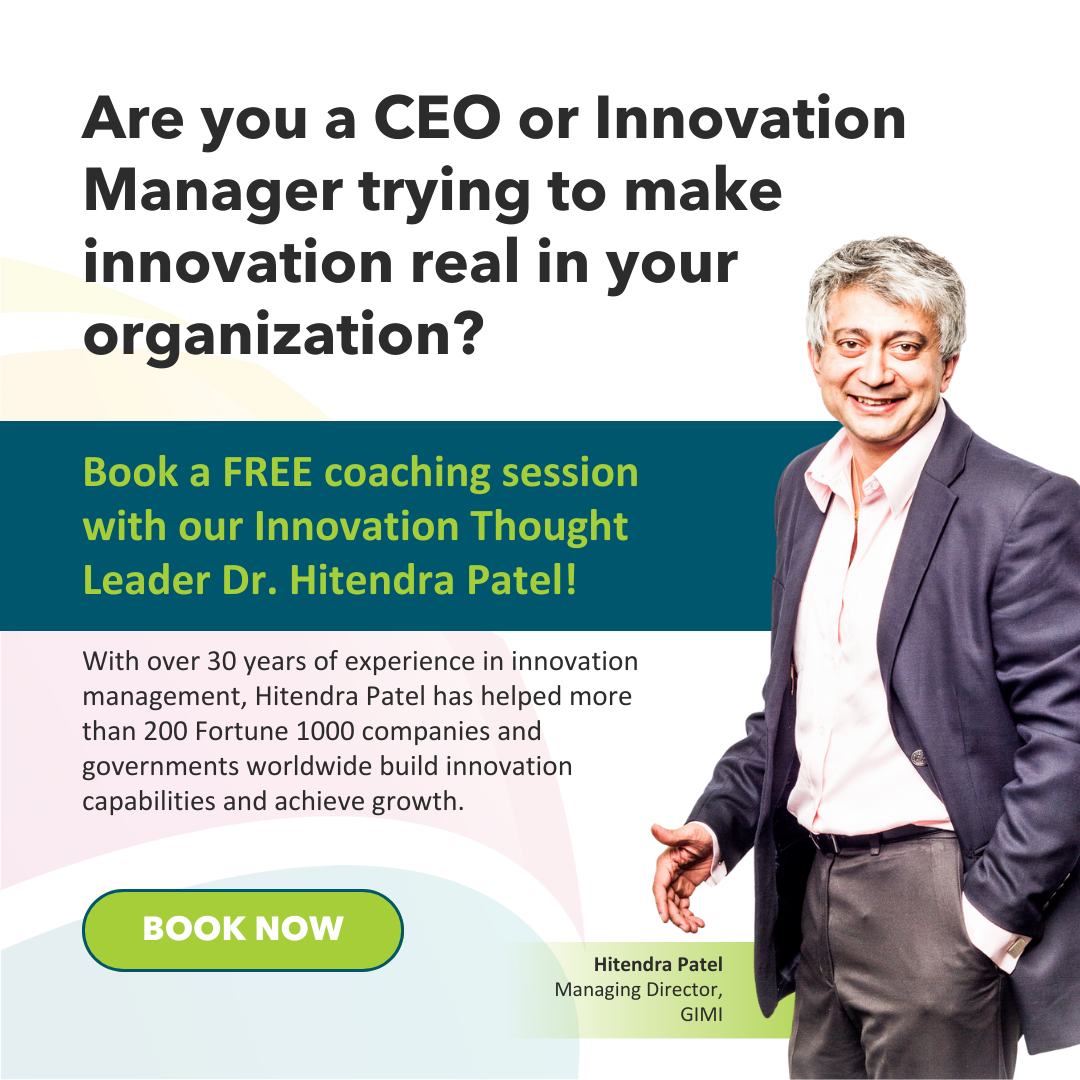
How do Companies Benefit from their Chief Innovation Officer
When you talk to most executives about the CIO, they immediately assume you are talking about the Chief Information Officer. Therefore, in this article and going forward, we will use the less common, but better acronym of CInO.
The CInO as you can ascertain from above is a relatively new position with many organizations just now exploring adding the position to the executive suite. Accordingly, many people do not even know what the CInO does. This article is intended to clarify and convince those CEO’s and Boards of Directors that the position is not only timely, but critical to the success of their organization.
So, what exactly does a CInO do on a day-to-day basis? Unfortunately, this is where a lot of the confusion resides. Some organizations think that the CInO is a lawyer that specializes in intellectual property. This is particularly true and universities where faculty generates research findings that often lead to patents and opportunities to commercialize the faculty work. We will refer to this as the “legal CInO”.
Some organizations believe that the CInO is an innovation scout. In this role, the CInO and their staff would read articles and academic papers as well as attending conferences and basically looking for new opportunities within and across industries. Once new ideas are discovered, the CInO brings them back to their organization and tries to find opportunities for their own organization. We will call this the “scout CInO”.
On a related theme, some CInO’s are tasked with looking for acquisition opportunities. Unfortunately, this applies to a lot of the large tech companies today. The CInO has a primary function of attending pitch contests in order to fund startups they can later acquire or explore opportunities to acquire already successful companies that complement or expand their existing product line. It would be inappropriate to name these companies because they have convinced the public that they are the most innovative companies in the world, when in fact they acquire most of their innovation. We will discuss that concept in greater detail later in this article. We will call these the “barbarian CInO”.
Many companies look for the CInO to come up with the new ideas, Unfortunately, this means that a lot of pressure is placed on that individual to come up with the majority of innovations. Once again, there are several big-name companies where this is the case. We will call these the “enlightened CInO”.
The last type of CInO manages the innovation process. This person sources ideas from the rank-and-file employee and acts to move the process forward within the organization. Let’s call this CInO the “process CInO”. Unfortunately, this CInO many times lack the inspirational component of teasing ideas out of the employees.
Which type of CInO is the right CInO for your organization? This, of course, depends on a number of factors, but almost never works as it should if only one approach is utilized. Think of it as a Maslow’s Hammer problem, named after Abraham Maslow who coined the phrase, “If the only tool you have is a hammer, you tend to see every problem as a nail.” If you consider the absurdity of an innovation professional as only utilizing one approach to solve a problem, you can see the humor in the statement.
The fact is that an excellent innovation professional is versed in more than one approach and might usually be considered a generalist instead of a specialist. Therein lies the rub; the innovation professional should be very good at one thing (the innovation process), and “just good” at many other things. The classic essay by Isaiah Berlin (discussing writers and thinkers) describes the hedgehog as an animal that sees the world through a single defining idea (examples given include Plato, Lucretius, Blaise Pascal, Marcel Proust and Fernand Braudel), while foxes draw on a wide variety of experiences and for whom the world cannot be boiled down to a single idea (examples given include Aristotle, Desiderius Erasmus, Johann Wolfgang Goethe). Implicitly, one cannot be both a hedgehog and a fox, but that is exactly what a CInO needs to be, and that is why so many companies seem to hire the enlightened or the legal CIno. They believe that people with good ideas or experience with patents must be able to run an innovation department. But can this person actually get anything done other than come up with good ideas or lock in someone else’s?
So, how does a company benefit from the right kind of CInO? Consider an individual who might be considered the greatest CInO, who did not hold the title, Steve Jobs. While the article cannot add much to the volumes already written about this man, let’s operate under the assumption that he wasn’t just a CEO, but a CInO. In fact, Apple and Google are both without CInO’s. Many have argued that Steve Jobs was both the CEO and CInO. Ignoring Google, let’s see why Steve Jobs, even with his well documented faults, was what a prototypical CInO could (not necessarily should) be and how Apple benefited from his unique management style.
The legal CInO might be the furthest away from Steve. The legal CInO is focused primarily on making money. Legal CInO’s tend to be the least popular in most academic organizations since they are perceived as there to make deals with the inventors of the organization. Many organizations, who one would expect to be innovative are actually hamstrung by the legal CInO. These inventors wee this legal CInO as “the organization” and works to minimize the ownership of the invention by the inventor. At one prominent medical school, the CInO tells professors and others that the organization keeps 75% of the intellectual property. These arrangements can lead to inventors withholding their discoveries and, in some cases, leaving the organization so they can keep more money that they feel they are entitled to. Obviously, this is a disincentive few organizations actually want.
The scout CInO spends a significant amount of time seeking opportunities. Someone that is good at this is invaluable to an organization as they infuse new ideas and products into the company. The problem with this specialist is that they tend to be focused more on analysis and the ideas by themselves instead of through others and remember that the definition of Management is “getting things done through others”. Finding ideas and integrating them into your organization may be entirely different skill sets and while many ideas come in, not many make it through the process, which is likely non-existent. Scouts should be socially active businesspeople who enjoy hearing about new ideas and companies, then bringing these ideas back to the company when they fit the strategic needs of the company. While no one has ever identified this person at Apple, and Steve would not have been able to go incognito to a conference or pitch contest, it is likely he had people like this on payroll.
The barbarian CInO is an acquisition specialist. Not much different than the legal CInO, the barbarian CInO is more interested in acquiring companies that are looking to sell out. Entrepreneurs generally can’t resist being acquired by a company such as Cisco, Apple or Google. In fact, in many circles, an exit by selling to one of the big-name companies translates to funding for future ventures become much easier. If you ever wondered how jerks keep getting funding, many times it is because they have been able to sell their ideas because they were acquired by a big-name company. Steve was known for being competitive. After all, Walter Isaacson claims that The Apple raid on Xerox PARC is sometimes described as one of the biggest heists in the chronicles of industry.
The enlightened CInO is inspirational (think Steve Jobs) knows how to inspire people to his ideas. Of course, when you are on a winning streak (perceived anyway) that Steve experienced (coupled with his difficult personality), people will follow you off a cliff. All of Jobs ideas were not a success, but he knew how to frame them as learning experiences. Whether or not Donald Trump is actually wealthy would not be the point, he creates the impression that he is a winner that convinces people to follow him.
The process CInO knows how to generate ideas and move them through a pipeline. Contrary to the vision that Steve Jobs created, this person can be a pure bureaucrat, accountant or process engineer. Of course, inspiring employees to come up with new ideas may not in the purview of this CInO. So, while this CInO might get things done, their lack of charisma and failure to inspire limits the success of this person.
So, going back to our hedgehog and fox; how can one be both? From the perspective of the hedgehog, that worldview frames the big idea as the process to be managed completely. One could be a successful CInO if the CEO is an inspirational figure who inspires and generates ideas within the organization, then feeds those ideas into the hedgehogs’ innovation management system. Ideas are then fairly evaluated, and the best ideas make it through the funnel. Unfortunately for the hedgehog, simply managing a process will not likely generate much excitement in the typical company. Many CInO’s are hedgehogs, mostly because foxes are so much more difficult to manage.
The fox oriented CInO have their own difficulties. While they may be interested in many things (they could be equated to a Polymath), sometimes they lack the ability to manage a process. Some people might refer to this person as pursuing the latest shiny object. The key to this person’s success is having an infrastructure to allow this person to chase the shiny objects (innovations?), while knowing that the process will put a governor on too many ideas that are not practical from a business perspective.
Accordingly, if an organization finds an individual who is a little bit hedgehog and a little bit fox, they have the perfect CInO. Yes, the legal CInO is critical to understand contracting and intellectual property. Yes, the scout CInO is critical in a scan of the world, and ability to get out and find new ideas and opportunities. Yes, the barbarian CInO is critical in forging new paths and strategically acquiring opportunities. Yes, the enlightened CInO should be one who inspires the entire organization to bring forth new ideas and opportunities. Finally, the Bureaucratic CInO absolutely MUST be in place in order to save money and time evaluating and dumping ideas that are out of scope or otherwise destined to fail. So, the ideal CInO will be a piece of all of the above.
The benefits of the prototypical CInO would therefore be an individual that commands the respect of, not only the executive suite, but the Board of Directors. They will have a reputation of thinking outside the box and having the ability to clearly articulate their ideas. They should have stellar connections both inside the industry and across industries. They can represent the company and feel comfortable in analyzing opportunities before they are placed in a pipeline of opportunities. Finally, they should feel comfortable with building a process to bring ideas into the innovation pipeline and manage that pipeline for maximum effectiveness.
Does this person exist? Yes, there are many people like this in the world, but given the rather unorthodox nature of this personality, they tend to be overlooked out of jealousy, fear that they will outshine others or that they would be viewed as an oddball. However, remember the classic Apple ad from 1997 “here’s to the crazy ones”. The ad just about summarizes the challenges and benefits of the Chief Innovation Officer
March 25, 2024

Editor-in-Chief
International Journal of Innovation Science





























